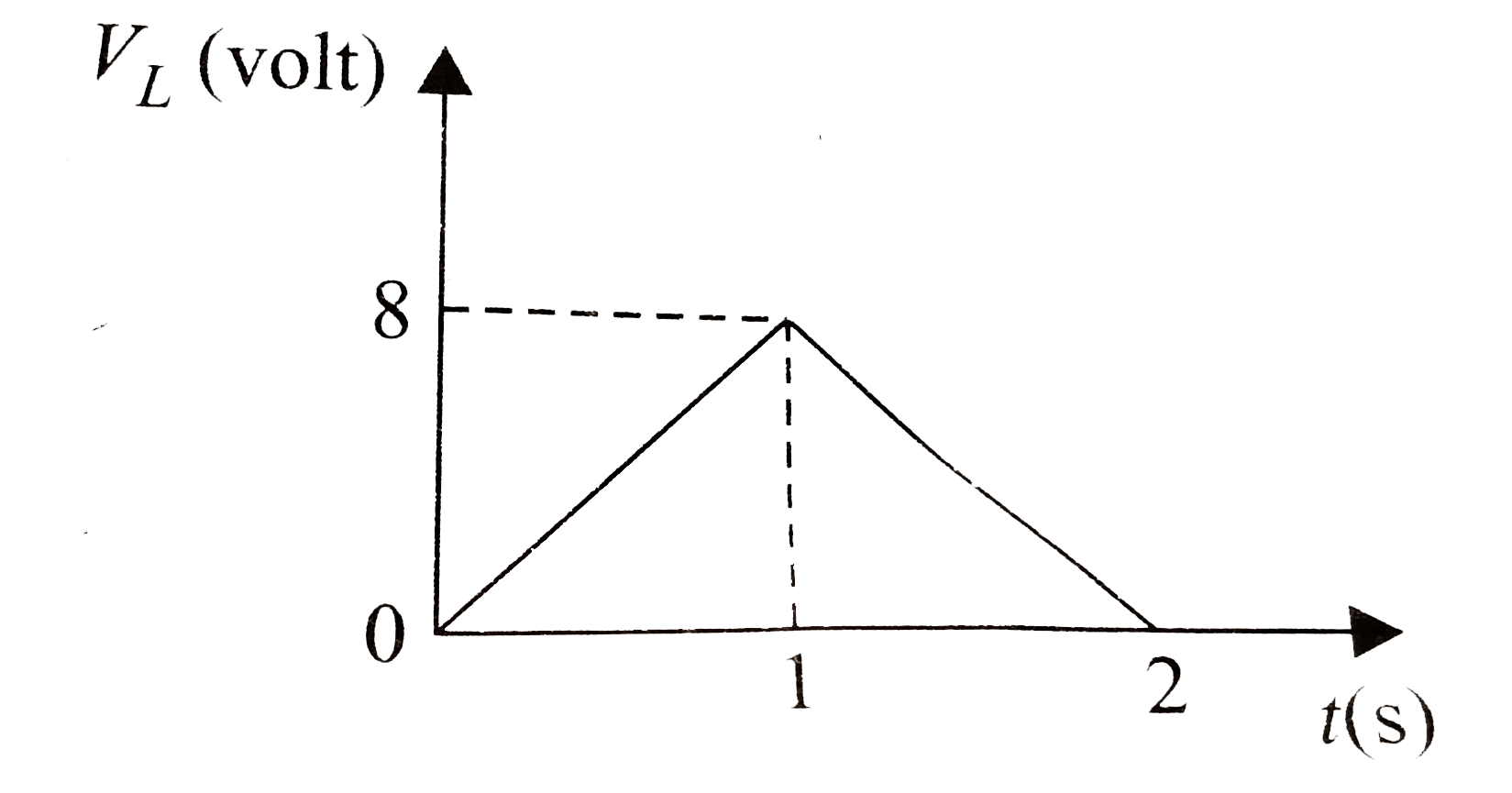The potential difference across a 2−H inductor as a funtion of time is shows in Fig. At t=0, current is zero. Choose the corrent stetement.

Current at t=2s is 5A
Current at t=2s is 10A
Current versus time graph across the inductor will be Fig.

Current versus time graph across the inductor will be Fig.

The correct Answer is:A, C
V=LdIdt⇒1∫0dI=1L1∫0Vdt
⇒I=1L [Area under ν−t graph from t=0 to t=t]
At t=2s, I=12[12×2×10]=5A
For t=0 to 2s,V=5t
I=1Lt∫05tdt=12[5t22]t0=5t24
For t=2 to 4s,V=−5t+20
I=12t∫0(−5t+20)dt⇒I=−5t24+10t
Hence the correct graph is (c ).
Topper's Solved these Questions
- INDUCTANCEBOOK - CENGAGE PHYSICSCHAPTER - INDUCTANCEEXERCISE - Exercises (assertion-reasoning)
2 Videos
- INDUCTANCEBOOK - CENGAGE PHYSICSCHAPTER - INDUCTANCEEXERCISE - Exercises (linked Compreshension)
36 Videos
- INDUCTANCEBOOK - CENGAGE PHYSICSCHAPTER - INDUCTANCEEXERCISE - Exercises (single Correct )
65 Videos
- HEATING EFFECT OF CURRENTBOOK - CENGAGE PHYSICSCHAPTER - HEATING EFFECT OF CURRENTEXERCISE - Thermal Power in Resistance Connected in Circuit
28 Videos
- KINETIC THEORYBOOK - CENGAGE PHYSICSCHAPTER - KINETIC THEORYEXERCISE - Question Bank
31 Videos
Similar Questions
Knowledge Check
The potential difference across a 10H inductor as a function of time is shown in the figure. At t=0 current is zero. Then
 AThe current in the inductor at t=6 is 3 ampBThe current in the inductor at t=1 sec is 1/4 ampCThe current in the inductor at t=4 is 5/2 amp.DThe variation of current versus time parabola.
AThe current in the inductor at t=6 is 3 ampBThe current in the inductor at t=1 sec is 1/4 ampCThe current in the inductor at t=4 is 5/2 amp.DThe variation of current versus time parabola.The potential difference across a 2-H inductor as a function of time is shown in Fig. At time t = 0, current is zero.

Current at t = 1 s isA1AB2AC4AD8AThe potential difference across a 2-H inductor as a function of time is shown in Fig. At time t = 0, current is zero.

The variation of current versus time isAa straight lineBa parabolaCa hyperbolaDexpotential
The potential difference across a 2-H inductor as a function of time is shown in Fig. At time t = 0, current is zero.

The variation of current versus time is
View SolutionThe potential difference across a 2H inductor as a function of time is shown in figure. At time t=0, current is zero
Current t=2 second is

View SolutionThe potential difference across a 2-H inductor as a function of time is shown in Fig. At time t=0, current is zero.

Area under VL−t graph gives
View SolutionThe potential difference across a 2H inductor as a function of time is shown in figure. At time t=0, current is zero
Current t=2 second is

View SolutionThe potential difference across a 2-H inductor as a function of time is shown in Fig. At time t=0, current is zero.

Area under VL−t graph gives
View Solution
